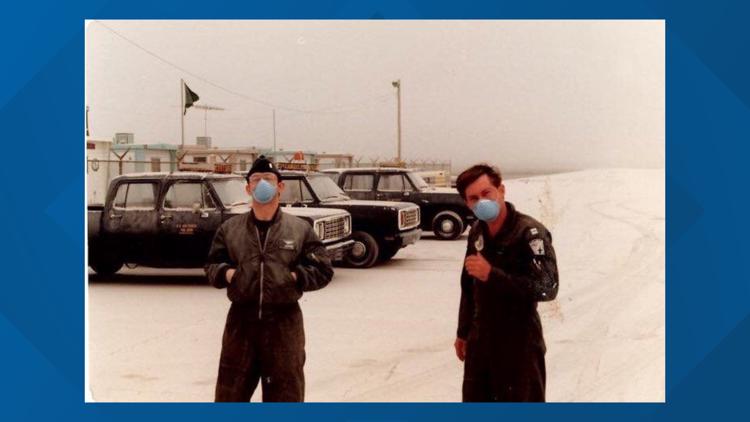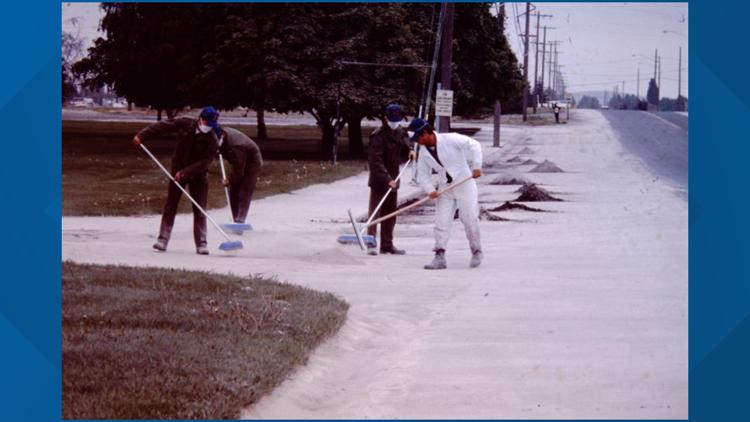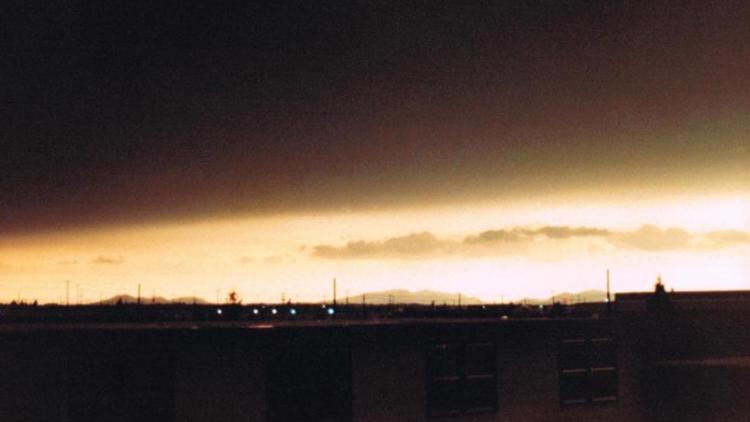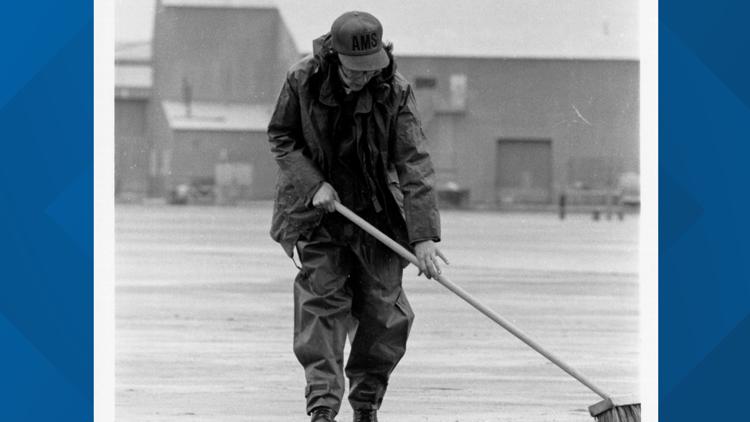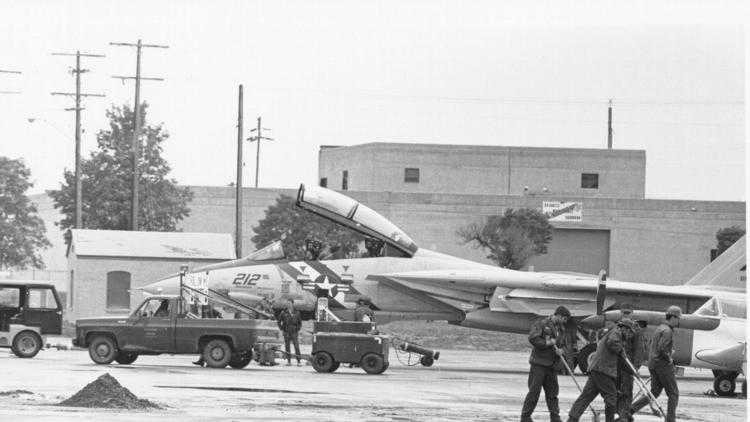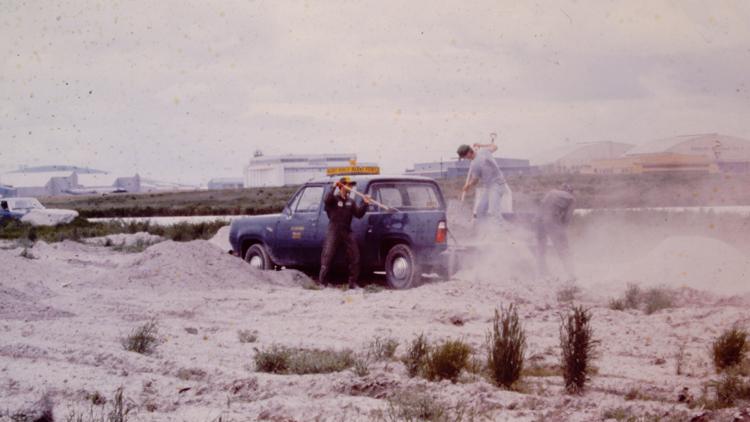SPOKANE, Wash. — It was a normal Sunday in Spokane paired with perfect spring weather. Thousands of spectators ready were for Skyfest at Fairchild Air Force Base.
“There’s a big, huge black wall coming,” recalls James Buenzli, who was 11 years old and on his way to the air show with family before the cloud of ash and turned them around.
Tanya Spurlock Bly was already at the base when she heard airmen announce that everyone had to leave.
“They had to go run off and start pushing the planes in hangars by hand,” she said.
Mount St. Helens erupted for over nine hours May 18, 1980, destroying everything in its immediate path and killing 57 people.
The air was toxic to breathe. Flakes of ash began to fall from the sky like fresh snow, but this wasn’t melting anytime soon.
“Basically, blacking out the sun in many communities as far away as Missoula, Montana,” said Freya Liggett, the Curator of History at the Northwest Museum of Arts & Culture.
For days, people in the Northwest were stuck trying to figure out what to do in a situation they’d never experienced before.
The cleanup process ahead of them seemed impossible and digging into a pile of ash at your front door felt like you were shoveling concrete.
Cyndi Cabral remembers watching the streetlights come on in the middle of the day.
“We had to wear a mask whenever we went out,” said Cabral.
Photos: People cope with ash fallout from Mount St. Helens eruption
There are traces throughout this history that remind us of what we’re going through during the coronavirus pandemic. Schools, jobs and team sports were canceled for weeks.
“History doesn’t necessarily repeat itself, but it always rhymes and I think that we’re seeing that effect with the images of masks," Liggett said. “With people wearing those for both the volcanic ash and now this invisible threat that’s out there today.”
Just like in 1980, the mask has become a sign of the times.
There’s no ash on the ground but the situation with coronavirus is full of unanswered questions. We’re stuck inside and leaving the house can feel like a burden.
“Pain doesn’t have an absolute scale,” Liggett explained. “People who are in pain because of the shutdown right now. It’s very real.”
One thing that’s changed since Mt. St Helens erupted is the technology.
The study of volcanic activity has evolved. Scientists now have a better understanding of the signs leading up to these natural disasters, which could save lives the next time this happens.
Forty years from now, we may look back on the year 2020 and recognize what we did right and what we did wrong.
Maybe we’ll know how to prevent a crisis like this again. Maybe we’ll recognize just how resilient the human race is.
While their doors are closed, the MAC will continue to honor the 40th anniversary of Mt. St. Helens with their online exhibit.
RELATED: Mount St. Helens awakens: A timeline



